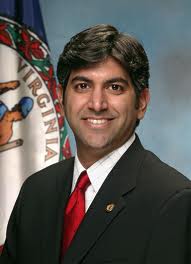Want smarter insights in your inbox? Sign up for our weekly newsletters to get only what matters to enterprise AI, data, and security leaders. Subscribe Now
This is a guest post by former White House chief technology officer Aneesh Chopra.
The launch of HealthCare.gov certainly didn’t go as planned. Due to technical errors, millions of Americans were sent to the functional equivalent of a waiting room before they could enter the shopping portion of the site.
Historically, projects of such complexity and demand have encountered early problems yet still often achieve great success. While much of the commentary has focused on coding problems, the site still has the potential to spur innovation — be it public or private — that will result in quality improvement and lower costs.
For context, the HealthCare.gov site is merely the front door to an incredibly complex technological undertaking tasked with organizing insurance plans, assessing program eligibility, facilitating consumer enrollment, managing financial services, and providing all of the associated customer support.
AI Scaling Hits Its Limits
Power caps, rising token costs, and inference delays are reshaping enterprise AI. Join our exclusive salon to discover how top teams are:
- Turning energy into a strategic advantage
- Architecting efficient inference for real throughput gains
- Unlocking competitive ROI with sustainable AI systems
Secure your spot to stay ahead: https://bit.ly/4mwGngO
An estimated 19 million people visited the site through Sunday, and many did so at the same time; at peak periods, there were five times as many simultaneous visitors as had been expected. In rapid response to that surge, the HealthCare.gov team tried to restrict the number of visitors to the area of the site where they could establish accounts and begin shopping.
Naturally, this was not ideal, but it was preferable to the alternative.
When Internet entrepreneurs prepare to launch a new service, they tend to anticipate two scenarios. The first, and worst, is that nobody visits. The other is that too many people do.
Rise of a new platform
Drawing from my experience as CTO in President Barack Obama’s first term, we overcame initial technical challenges in popular programs such as “Cash for Clunkers” or the Post-9/11 GI Bill of Rights for veterans through an analysis of the root cause problems — and a systematic plan to address them.
I’m confident that the HealthCare.gov team will similarly fix the technology with the help of experienced technical talent – in and out of government – to work through its punch list. The site should continue to improve in the weeks ahead, building toward Dec. 15.
But the real story, likely to play out over the coming months, will be its rise as a new platform for innovation – one that will lead to the creation of new private sector services to improve our nation’s health.
First, consumers will soon have access to a growing array of Internet-enabled brokers competing to help select a plan that is right for them. In addition to mature firms like eHealth and GetInsured, a growing array of startups like Fuse Insurance and Gravie will offer more personalized recommendations. These services benefit from a policy decision allowing technical access to HealthCare.gov.
In other words, like tax preparation, a consumer can either download forms at irs.gov, or complete them online through private services like TurboTax or H&R Block — but at no additional cost (these Web-enabled brokers are compensated by existing commissions).
Related: Read our full report on the challenges of relying on a “tech surge” to make improvements to HealthCare.gov.
Second, consumers will have access to better health care services due to the level playing field delivered by the exchanges. After decades in which a small number of insurance companies have dominated market share in some states and locked in the status quo, the exchanges have increased competition.
Take the Nevada market, where primary care services from innovative service provider Iora Health will, for the first time, be available through insurance products sold by the Nevada co-op on the exchange. Iora has built a new model of primary care focused on treating patients, especially the sickest ones, in a more coordinated manner – with incredible early results. For instance, over 85 percent of Iora’s patients with hypertension have the condition under control, as compared to the national average of around 50 percent. Better yet, this better care has led up to 15 percent reductions in total health care costs.
Third, HealthCare.gov will catalyze a growing number of private sector exchanges, offering greater choice and service to millions of Americans with employer based coverage. HCentive, for example, is fielding requests from small business owners who are seeking marketplaces as offered large employers through firms like Bloom Health. Others like Liazon and Maxwell Health are attracting venture capital at a fast clip.
Right now, the focus is rightly on correcting the technical issues at HealthCare.gov, but we shouldn’t ignore the very real benefits of the site. These and many more services built on top of data from Healthcare.gov will help realize President Obama’s vision of a health care system that achieves improved care, better service, and lower cost. The journey has just begun, and it will be worth the wait.
 Aneesh Chopra is a senior fellow at the Center for American Progress, is the author of the forthcoming book, Innovative State: How New Technologies will Transform Government, and the former U.S. chief technology officer in the Obama Administration.
Aneesh Chopra is a senior fellow at the Center for American Progress, is the author of the forthcoming book, Innovative State: How New Technologies will Transform Government, and the former U.S. chief technology officer in the Obama Administration.


